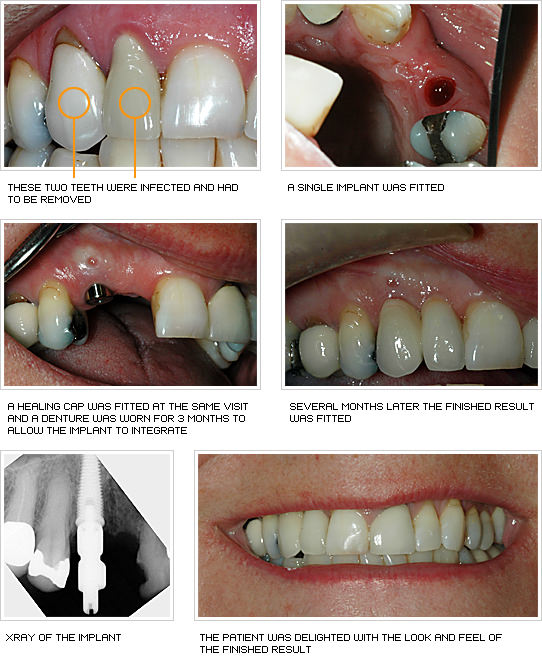The Basic Principles Of Dental Sense
The Basic Principles Of Dental Sense
Blog Article
Dental Sense for Dummies
Table of ContentsOur Dental Sense PDFsAll about Dental SenseThe Greatest Guide To Dental SenseThe Only Guide for Dental Sense
are medical gadgets surgically implanted into the jaw to restore a person's ability to eat or their look. They supply support for artificial (phony) teeth, such as crowns, bridges, or dentures. When a tooth is lost as a result of injury or condition, an individual can experience problems such as rapid bone loss, faulty speech, or modifications to eating patterns that result in pain.Dental implant systems include a dental implant body and oral implant joint and might also include a joint fixation screw. Wisdom tooth cavity. The dental implant body is operatively placed in the jawbone in area of the tooth's root. The dental implant joint is normally connected to the implant body by the joint addiction screw and prolongs through gums into the mouth to sustain the connected synthetic teeth
(https://triberr.com/dentalsense1)Framework of The Oral Implant System selecting dental implants, speak to your oral service provider about the potential advantages and dangers, and whether you are a prospect for the procedure. Points to think about: Your overall wellness is a crucial factor in identifying whether you are a good prospect for dental implants, for how long it will certainly require to recover, and the length of time the dental implant might stay in area.
Smoking cigarettes may influence the recovery process and reduce the long-lasting success of the dental implant. The recovery process for the dental implant body might take several months or longer, throughout which time you commonly have a temporary joint in area of the tooth. the oral implant treatment: Very carefully adhere to the dental hygiene instructions offered to you by your oral copyright.
The Greatest Guide To Dental Sense
Implant failure can cause the need for one more operation to fix or change the dental implant system. Recovers the capability to chew Restores aesthetic appearance Aids keep the jawbone from reducing due to bone loss Protects the health and wellness of the surrounding bone and periodontals Assists keep nearby (neighboring) teeth secure Improves high quality of life Damages to bordering all-natural teeth during implant placement Injury to the surrounding cells throughout surgical procedure, such as sinus perforation Injury during surgical treatment (for instance, crack of bordering jawbone) Inadequate feature, such as seeming like the teeth do not bite with each other typically A sensation that the tooth is loose or turning in position arising from an abutment screw loosening up Implant body failure (looseness of the implant body) because of systemic infection, which might be most likely in individuals with uncontrolled diabetics issues because of regional infection in bone and gums sustaining the implant body because of delayed recovery, which might be most likely in individuals that smoke Problem cleansing the gum tissues around the implant, leading to bad dental hygiene Neglected gum illness Post-surgical pins and needles because of nerve impingement or damages Constantly inform healthcare suppliers and imaging service technicians that you have oral implants prior to any type of magnetic vibration imaging (MRI) or x-ray treatments.
FDA is Continue not aware of any unfavorable occasions reported for MRI or x-ray treatments with oral implants. Dental implants systems are commonly made from materials that adhere to global consensus standards of the International Company for Standardization (ISO) or ASTM International. These requirements have details of what makes a safe product.

An oral implant is a framework that changes a missing out on tooth. With screw-like devices, the cosmetic surgeon inserts a dental implant into the jawbone, and it acts as an anchor for a fabricated tooth, called a crown. A device called a joint links the synthetic tooth to the dental implant. The crown is tailor-made to fit the individual's mouth and match the shade of their teeth.
The Ultimate Guide To Dental Sense
Some people are not qualified for oral implant surgery. It is for dental specialists to operate individuals with: severe illnessuncontrollable metabolic diseasebone or soft tissue illness or infectionIf these issues are resolved, a person can have the surgical procedure. In, oral doctors abstain from running on individuals with: If people with any one of the above undertake oral implant surgical treatment, there is a greater risk of the dental implant falling short.

Oral implant surgery is a personalized process. It's not the very same for everyone. However the complying with offers a basic review of what you can expect your dental practitioner, dental cosmetic surgeon, periodontist or prosthodontist to do: Put the implant operatively. Offer you time to recover. Attach the post and last crown, bridge or denture.
Next off, your cosmetic surgeon will meticulously place the dental implant right into your jaw. If your dental implant is near the front of your mouth, your dental expert will make a temporary tooth for you to use until you recover.
Top Guidelines Of Dental Sense
Your copyright can inform you what to anticipate in your scenario. Throughout the healing phase, your jawbone ought to fuse to the oral implant. This process, called osseointegration, is essential for security and long-term success. This process can take anywhere from three to nine months. In many cases, it may take longer.
When your implant heals, your dental professional can connect the joint (tiny port article) and your last restoration (crown, bridge or denture). This normally takes regarding one hour to finish and might require a second small surgery. You should not really feel any type of discomfort during your dental implant treatment since your copyright will certainly use medicine to numb your periodontals.
Report this page